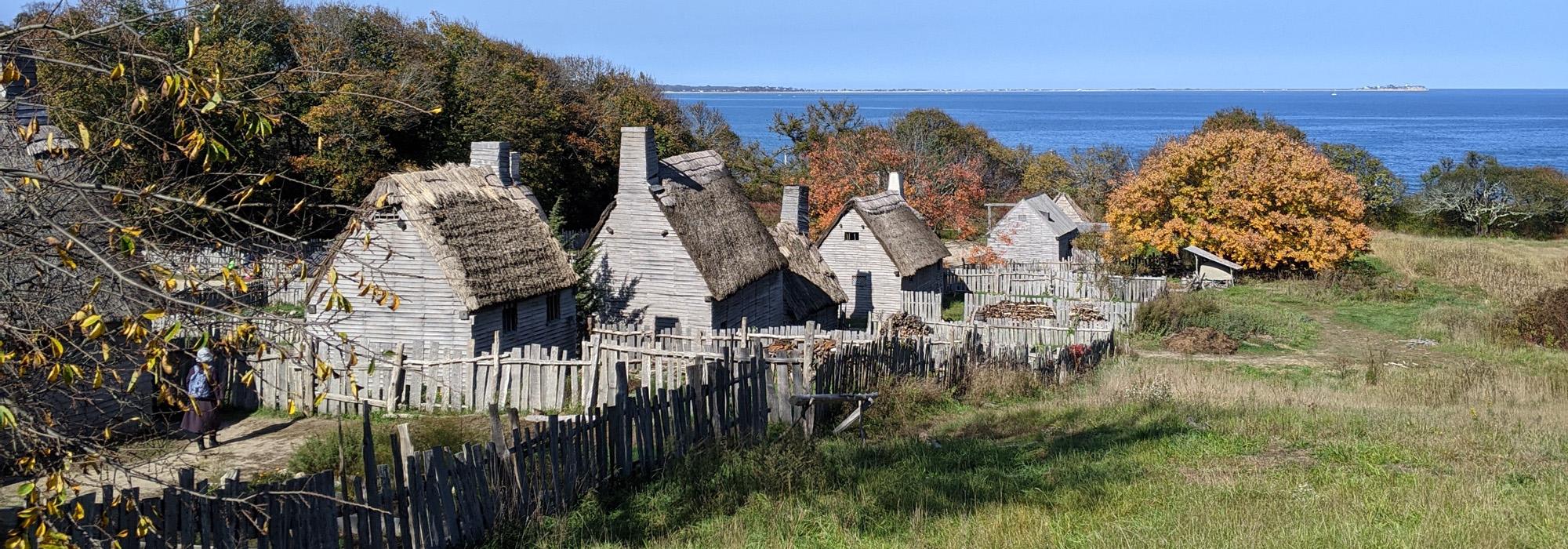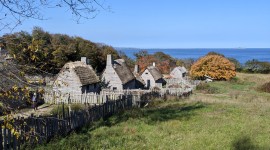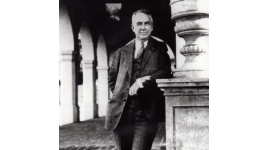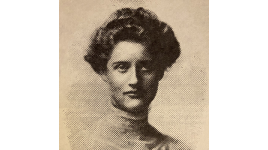The Untold Landscape History of Plimoth Patuxet
Plymouth, MA, is well known as the location of the colony founded in 1620 by the Pilgrims disembarking from the Mayflower. Plimoth Patuxet Museums, founded in 1947, tells the story of these first challenging years of English colonial life in Plymouth, as well as illuminating the history of the Indigenous Wampanoag people who called the land “Patuxet.” Lesser known is the significant landscape architecture history present here – with grounds designed by the Olmsted Brothers firm and Mary Cunningham in the early twentieth century. The museum now seeks to tell this significant layer of the landscape’s story, by revealing and preserving aspects of these landscape architects’ designs that have faced years of deferred maintenance and subsequent decline.
History
Situated on 130 acres along the Eel River in Plymouth, Massachusetts, overlooking Cape Cod Bay, the main campus of Plimoth Patuxet Museums (formerly Plimoth Plantation) contains thousands of years of history. Archaeological studies of the grounds reveal that Wampanoag families lived at the river’s edge for millennia.
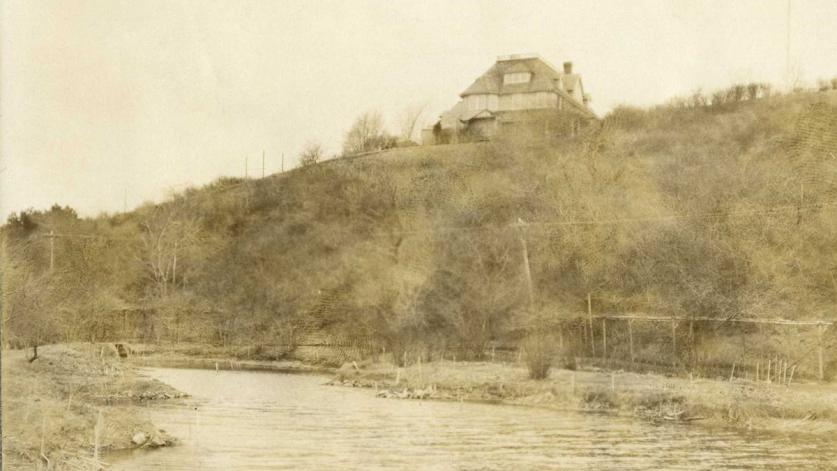
Descendants of the “First People” greeted the newly arrived Mayflower passengers (the Pilgrims) upon landing in the Wampanoag community of Patuxet in December 1620. In spring of the following year, the Indigenous people – who had signed a treaty of mutual alliance with the Pilgrims – introduced them to the local harvest, including corn, beans, and squash, and taught them the planting practices that would sustain the colony through those first uncertain years. Within a generation, English families were establishing homes and farms along the Eel River.
In 1878 Benjamin Robbins Curtis, a prosperous young Boston lawyer, purchased property near the river for a summer retreat. Curtis passed away just a few years later, and Henry and Hattie Hornblower, his neighbors from Beacon Hill in Boston, purchased the property, which included the large, Edwardian-style summer home that Curtis had built on the bluff overlooking the river and bay.
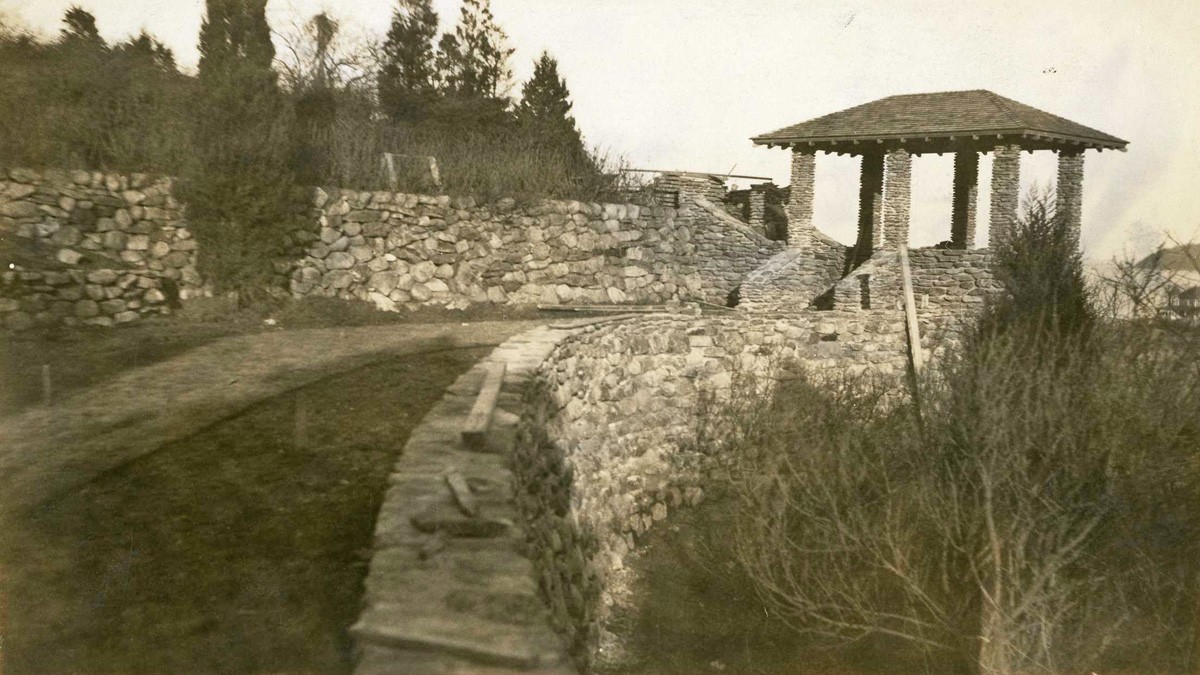
The Hornblowers retained the services of the renowned Olmsted Brothers firm in 1919 to create the gardens for their Country Place Era estate, which the family dubbed “Eel River Farm.” Although overgrown, significant features of the Olmsted Brothers landscape remain, including road alignments, specimen plantings, Naturalistic features such as stone walls, and a tea house. As much of the land is on a steep bank overlooking the river, the firm, with James Frederick Dawson as the principal on the project, also regraded and terraced the land.
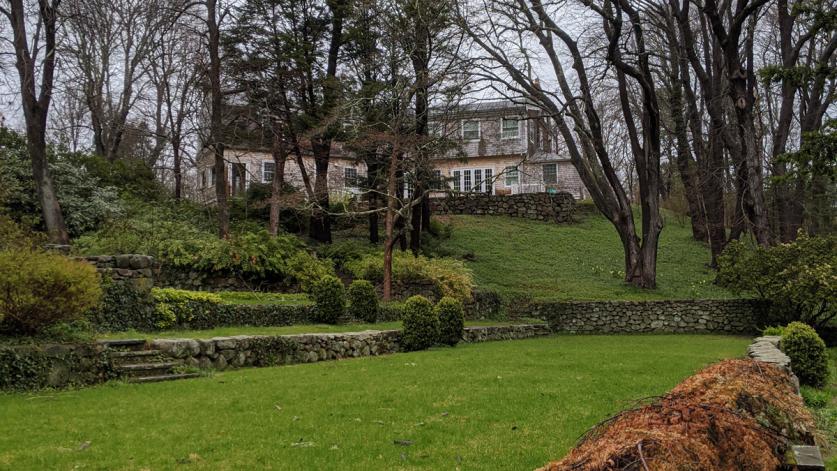
In 1927 Ralph Hornblower, son of Henry and Hattie, built a cottage on a hill (“Eel Hill”) just north of the main house. He hired landscape architect Mary Cunningham, whom he had met through a family connection to Vassar, her alma mater, to plan the landscape. Cunningham designed an Italianate garden featuring perennial beds, a bowling green, and a pool and amphitheater just west of the house. Today, the garden is a prominent feature of the Plimoth Patuxet campus, and is the site of many wedding ceremonies and other museum events. Known as the “Hornblower Garden,” it holds significance as one of few remaining examples of Cunningham’s work.
Ralph’s young son, Henry Hornblower II, spent his summers at Eel River Farm, discovering a passion for archaeology and history that would lead him to create Plimoth Plantation (now Plimoth Patuxet Museums), which stands on the property today. Founded in 1947, the living history museum portrays the nuanced, interwoven stories of seventeenth-century life in historic Patuxet, illuminating how the Pilgrims and Indigenous people coexisted in collaboration, and at times in strife, in this complex landscape.
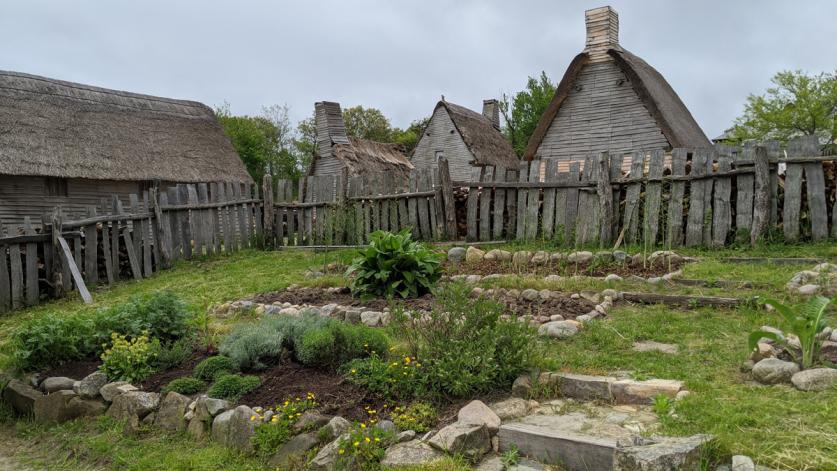
The Plimoth Patuxet historic property reveals a palimpsest of cultural landscapes, from prehistoric archaeological sites to extant features of the Olmsted and Cunningham designs. The Eel River Farm mansion was razed during the construction of the museum, yet many built features of the Olmsted landscape were retained, including a garden parterre on the hillside overlooking the river, a 90-foot-long retaining wall leading to the stone tea house, earthen ramps and paths leading down to the river’s edge, and a small trout pond. Though the gardens are overgrown and many of the features in need of maintenance and care, these elements of the historic designed landscape provide the essential bone structure of the original Olmsted design. The Hornblower Garden, in contrast to the deteriorated Olmsted-designed portions of the estate, was not impacted by the development of the museum property, and remains largely intact.
Threat
Plimoth Patuxet is the living history museum of seventeenth-century New England. Through the stories of Mayflower’s 1620 transatlantic crossing, and the Native people and English colonists who met along these shores, Plimoth presents living history exhibits, educational programs, and provocative conversations about this consequential period of time in Indigenous Patuxet and Plymouth, Massachusetts. As a mission-driven organization focused on the seventeenth century, the twentieth century contributions of landscape architecture at this site have largely been disregarded, and if diminished maintenance were to continue, are threatened with erasure.
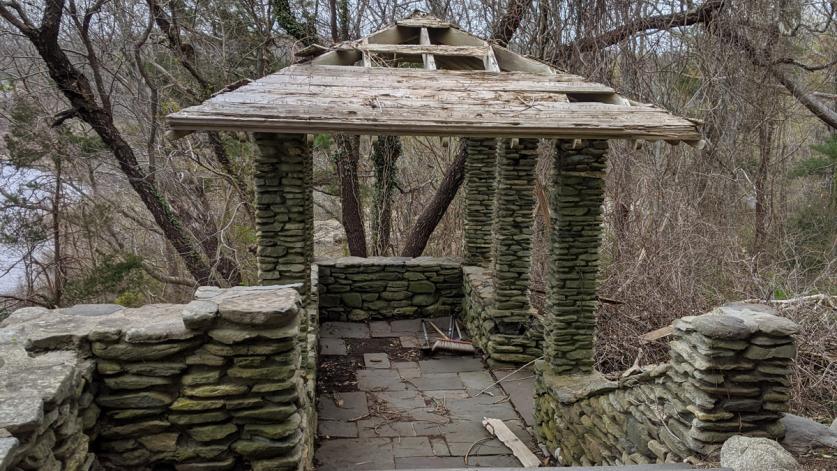
Many landscape elements developed during this period, primarily by the Olmsted Brothers firm with James Dawson as project lead, have suffered from neglect. Additionally, natural processes such as erosion along the steep embankments of the Eel River have accelerated potential degradation of features, and the decades-long overgrowth of unmanaged vegetation has obscured other features, not to mention key intentional visual and spatial relationships entirely. Of particular concern are the tea house and adjacent terracing and stone walls along the steep slopes, as well as the abandoned trout ponds along the shoreline. Every year the degradation of these features accelerates.
What You Can Do To Help
The Museum is currently engaging at the state level, including with the Massachusetts Historical Commission (MHC), to access resources to allow for inventory of the extant landscape for documentation and preservation purposes. The aim is to have surveying activities in progress by 2021, with a more complete timeline for uncovering and preserving significant landscape features in time for the April 2022 bicentennial celebrations of Frederick Law Olmsted, Sr.’s, birth. The goal is to leverage these planned festivities and host numerous activities on the property over the course of the year, such as tours, exhibits, and film screenings, in order to build a network of supporters who can either provide financial support or volunteer time to aid with future preservation planning.
You can donate now to support the ongoing work of the Museum, and follow them on Facebook, Twitter, and Instagram to keep apprised of upcoming Olmsted-related activities.



